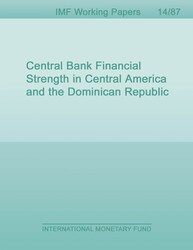
Central Bank Financial Strength in Central America and the Dominican Republic
This paper examines the financial strength of central banks in Central America and the Dominican Republic (CADR). Some central banks are working off the effects of intervention in distressed financial institutions during the 1990's and early 2000's. Their net income has improved since then owing to lower interest rates, a reduction in interest bearing debt, and recapitalization transfers. Claims on the government have fallen, but remain high and are typically reimbursed at below-market rates, and capital is negative when adjusting for this. Capital is sufficient to back a low inflation target given that the income position is supported by unremunerated reserve requirements. Capital is likely to increase over time, but only gradually, leaving countries vulnerable to macroeconomic risks. The capacity of CADR central banks to engage in macroeconomic stabilization would benefit from increased emphasis on low inflation as the primary objective of monetary policy and a stronger commitment by governments to recapitalization.
Publication date: May 2014
ISBN: 9781484387368
$18.00
Add to Cart by clicking price of the language and format you'd like to purchase
Available Languages and Formats
| English |
Prices in red indicate formats that are not yet available but are forthcoming.
Topics covered in this book
This title contains information about the following subjects.
Click on a subject if you would like to see other titles with the same subjects.
Economics- Macroeconomics , Economics / General , International - Economics , central bank , central bank financial strength , money demand , recapitalization , Central America , Costa Rica , Dominican Republic , Guatemala , Honduras , Nicaragua
Summary
Copyright © 2010 - 2024
Powered by:
AIDC



